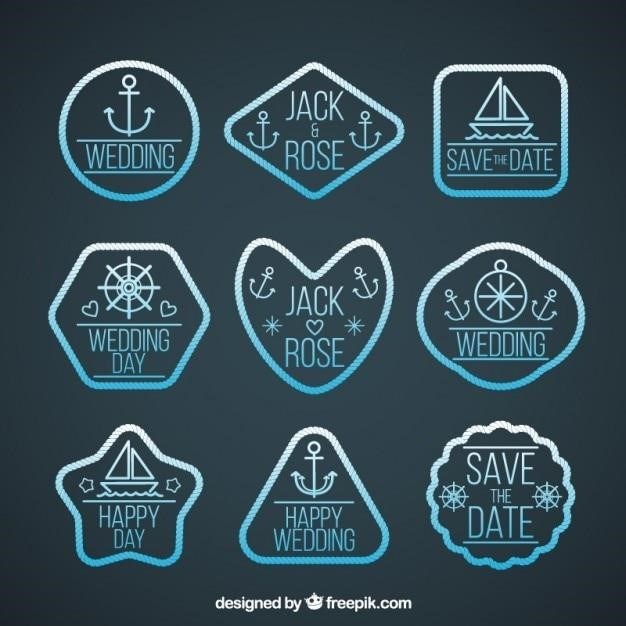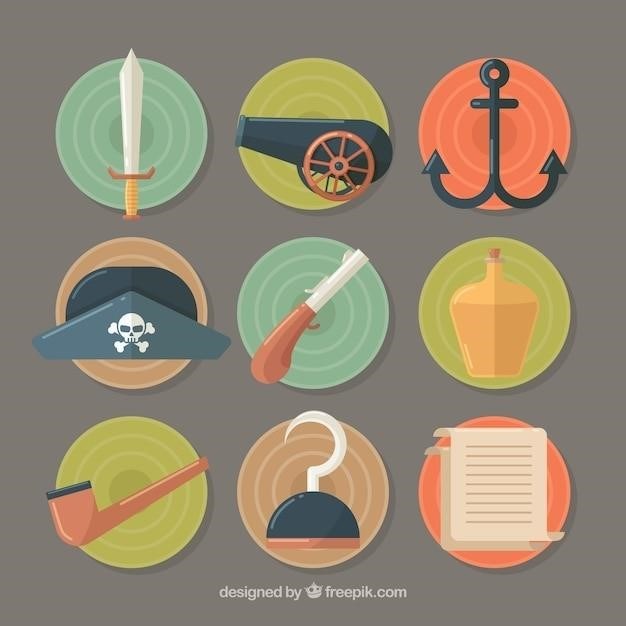This guide provides information on identifying vintage Anchor Hocking glassware, including Fire-King, Royal Ruby, and other popular patterns. It covers identifying marks, patterns, and provides insights into their value. Learn how to distinguish authentic Anchor Hocking pieces from imitations and discover the history behind this iconic American glassware brand.
Introduction
Anchor Hocking, a renowned name in American glassware, has produced a wide array of kitchenware, tableware, and decorative items since the early 20th century. Their most famous line, Fire-King, gained immense popularity for its durability and heat resistance, becoming a staple in kitchens across the nation. However, the vast selection of patterns, shapes, and markings can make identifying authentic Anchor Hocking pieces a challenge, particularly for those new to collecting. This identification guide serves as a comprehensive resource for collectors and enthusiasts, providing insights into the history of Anchor Hocking, identifying markings, and recognizing popular patterns. From the iconic Fire-King to the vibrant Royal Ruby, this guide will help you navigate the world of Anchor Hocking glassware and appreciate its unique charm and enduring appeal.
Anchor Hocking History
The journey of Anchor Hocking began in 1905 with the founding of the Hocking Glass Company in Lancaster, Ohio. Situated near the Hocking River, the company’s name pays tribute to its location. Initially focusing on producing utilitarian glassware, Hocking Glass quickly gained recognition for its high-quality products. In 1937, the company merged with the Anchor Cap and Closure Corporation, resulting in the creation of Anchor Hocking Glass Corporation. This merger significantly expanded the company’s reach and product offerings, solidifying its position as a leading manufacturer of glassware in the United States. Over the years, Anchor Hocking has introduced numerous iconic lines, including Fire-King, Royal Ruby, and Early American, each with its distinctive style and characteristics. Today, Anchor Hocking remains a respected name in the glassware industry, and its vintage pieces continue to be prized by collectors for their enduring quality and nostalgic charm.
Identifying Anchor Hocking Marks
Identifying authentic Anchor Hocking glassware often involves examining the marks found on the bottom of the pieces. The most common mark is an anchor superimposed over an “H,” representing the company’s name. This mark, often referred to as the “Anchor and H,” has evolved over the years in terms of its size, detail, and placement on the piece. Early Anchor Hocking pieces may also feature a mark with the words “Anchor Hocking” or “A.H. Co.” Additionally, some pieces might have specific marks indicating their pattern or manufacturing date. Fire-King glassware, a popular line produced by Anchor Hocking, typically features a “Fire-King” mark alongside the Anchor and H, often accompanied by additional details like “Oven Glass” or “Made in USA.” It’s important to remember that not all Anchor Hocking pieces are marked, so examining the style, color, and shape of the glassware can also be helpful in determining its authenticity. Studying reference guides, joining online forums, and attending antique shows can further enhance your ability to identify Anchor Hocking marks and confidently add authentic pieces to your collection.

Fire-King Glassware
Fire-King, a popular line of heat-resistant oven glassware, is a significant part of Anchor Hocking’s legacy. Produced from the 1940s through the 2000s, Fire-King pieces are known for their durability and distinctive patterns. The popularity of stylized kitchenware in the Atomic Age contributed to the wide range of patterns and colors that Fire-King offered, making vintage identification somewhat challenging for the untrained eye. However, these durable dishes retain both practical and aesthetic appeal for amateur chefs and collectors alike. Fire-King’s success stems from its ability to withstand high temperatures, making it ideal for baking and serving. The brand’s enduring popularity has led to a dedicated community of collectors who actively seek out vintage Fire-King pieces, particularly those in excellent condition and with unique patterns. The combination of functionality and vintage charm has cemented Fire-King’s place as a sought-after collectible, with pieces often fetching high prices on the secondary market, especially those in original condition and with rare patterns.
Fire-King Marks
Identifying authentic Fire-King pieces often involves scrutinizing the markings on the bottom of the glassware. While not all Fire-King pieces are marked, the presence of specific markings can be a strong indicator of authenticity. One common mark is “Fire-King Oven Glass,” which appeared on pieces produced in the 1940s. During the 1950s, the mark evolved to include “Made in the U.S.A.” This particular mark remained in use throughout the 1950s, offering a clue to the age of the piece. Fire-King pieces from the 1960s can be identified by the Anchor Hocking logo, typically an anchor with a stylized “H” in the center. Beyond these general markings, specific patterns may have unique markings or variations, further aiding in identification. For instance, the “Star of David” pattern often features a distinct mark with the Anchor Hocking logo, while the “Early American” pattern might include “Anchor Hocking” or “Anchor H” markings. These specific markings, coupled with the overall design and manufacturing techniques, can help collectors confidently distinguish genuine Fire-King pieces from imitations or misidentified items.
Fire-King Patterns
Fire-King glassware is renowned for its iconic patterns, which have become highly sought after by collectors and enthusiasts. The popularity of stylized kitchenware during the atomic age has led to a diverse array of patterns, each with its own unique aesthetic appeal. From the classic “Jade-ite” pattern with its vibrant green hue to the iconic “Red” pattern with its bold crimson color, Fire-King offered a range of styles that resonated with the tastes of the time. Other popular patterns include “Peach,” “Turquoise,” “Yellow,” and “White,” each with its own distinctive characteristics. These patterns are not only aesthetically pleasing but also reflect the evolving design trends and cultural preferences of mid-20th century America. Identifying Fire-King patterns requires a keen eye for detail, as subtle variations in color, shape, and design elements can distinguish one pattern from another. Collectors often rely on pattern guides and online resources to help them accurately identify and appreciate the diverse range of Fire-King patterns.
Royal Ruby Glassware
Anchor Hocking’s Royal Ruby glassware is a captivating collection characterized by its deep, rich red hue. This distinctive glass, introduced in the mid-20th century, quickly gained popularity for its elegant appearance and versatility. While not all Royal Ruby pieces bear the Anchor Hocking mark, identifying them often involves examining the bottom for an etched or stamped anchor with an uppercase “H” at its center. Early Royal Ruby creamer and sugar pieces are distinguished by their rounded bowls, adding to their charm. This line of glassware was designed to complement a variety of dining styles, from casual gatherings to more formal occasions. The rich red color adds a touch of sophistication and warmth to any table setting. Royal Ruby pieces are often sought after by collectors for their unique color, classic designs, and nostalgic appeal, making them valuable additions to any glassware collection.
Other Anchor Hocking Patterns

Beyond Fire-King and Royal Ruby, Anchor Hocking produced a vast array of patterns, each with its own unique style and appeal. These patterns, often reflecting the trends of their time, showcase the company’s versatility in design and craftsmanship. Some notable patterns include Early American, with its charming colonial motifs; Wexford, featuring intricate floral designs; and Prescut, known for its elegant, geometric patterns. These patterns adorned a wide range of tableware, from dinner plates and bowls to serving dishes and teacups, making them suitable for everyday use and special occasions. While some patterns were produced for a limited time, others enjoyed long-lasting popularity, becoming iconic pieces of American glassware history. Identifying these patterns often involves examining the details of the design, the type of glassware, and the presence of any markings or stamps on the underside. Collectors often seek out these patterns for their historical significance, aesthetic appeal, and practical value.
Value Guide
The value of Anchor Hocking glassware varies significantly depending on several factors. Rarity, condition, and popularity are key determinants. Fire-King, particularly pieces from the 1940s and 1950s, often commands higher prices due to their historical significance and widespread appeal. Patterns like “Jadeite” and “Red” are highly sought after by collectors. Royal Ruby, especially pieces with unique designs or in excellent condition, can also fetch substantial prices. Early American and Wexford patterns, while less common than Fire-King, are valued for their distinctive styles and historical significance. The presence of original markings or stamps can also enhance the value of pieces. Items in pristine condition with no chips, cracks, or scratches are generally more valuable. It’s important to research specific patterns and their market value to determine a fair price for your Anchor Hocking pieces. Online marketplaces and antique shops can offer valuable insights into current market trends and prices. Remember, the value of vintage glassware is often subjective and depends on individual collector preferences.
Resources
For further exploration and assistance with identifying Anchor Hocking glassware, a variety of resources are available. Online forums and communities dedicated to vintage glassware provide a platform for sharing knowledge, comparing pieces, and seeking guidance from experienced collectors. Websites like eBay, Etsy, and specialized antique shops offer a wealth of information on patterns, markings, and current market values. Books and publications specifically dedicated to Fire-King and other Anchor Hocking patterns provide comprehensive guides, historical context, and detailed illustrations. The Anchor Hocking Glass Museum, located in Lancaster, Ohio, offers a fascinating glimpse into the company’s history and legacy. Their website and social media platforms may provide valuable resources and insights. Remember to approach online information with a critical eye, verifying facts and comparing sources to ensure accuracy. Engaging with the community of collectors can be a rewarding and educational experience, leading to a deeper appreciation for the history and artistry of Anchor Hocking glassware.
